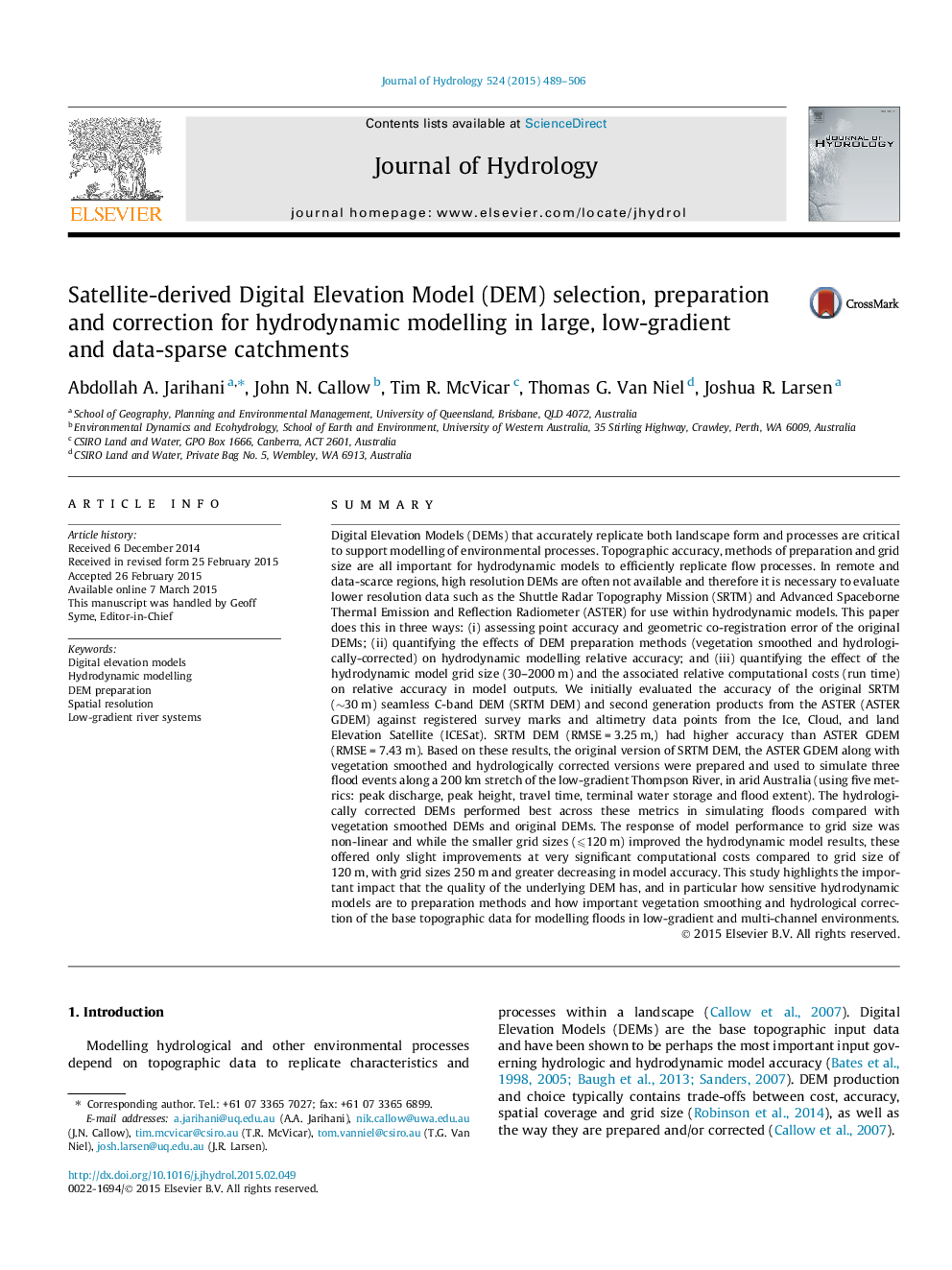| کد مقاله | کد نشریه | سال انتشار | مقاله انگلیسی | نسخه تمام متن |
|---|---|---|---|---|
| 6411456 | 1629926 | 2015 | 18 صفحه PDF | دانلود رایگان |

- SRTM DEM had higher accuracy than ASTER GDEM.
- Vegetation smoothed DEM improved the hydrodynamic model results.
- Hydrologically-corrected DEM improved the hydrodynamic model results.
- The hydrodynamic model reached optimum performance at grid size of 120Â m.
SummaryDigital Elevation Models (DEMs) that accurately replicate both landscape form and processes are critical to support modelling of environmental processes. Topographic accuracy, methods of preparation and grid size are all important for hydrodynamic models to efficiently replicate flow processes. In remote and data-scarce regions, high resolution DEMs are often not available and therefore it is necessary to evaluate lower resolution data such as the Shuttle Radar Topography Mission (SRTM) and Advanced Spaceborne Thermal Emission and Reflection Radiometer (ASTER) for use within hydrodynamic models. This paper does this in three ways: (i) assessing point accuracy and geometric co-registration error of the original DEMs; (ii) quantifying the effects of DEM preparation methods (vegetation smoothed and hydrologically-corrected) on hydrodynamic modelling relative accuracy; and (iii) quantifying the effect of the hydrodynamic model grid size (30-2000 m) and the associated relative computational costs (run time) on relative accuracy in model outputs. We initially evaluated the accuracy of the original SRTM (â¼30 m) seamless C-band DEM (SRTM DEM) and second generation products from the ASTER (ASTER GDEM) against registered survey marks and altimetry data points from the Ice, Cloud, and land Elevation Satellite (ICESat). SRTM DEM (RMSE = 3.25 m,) had higher accuracy than ASTER GDEM (RMSE = 7.43 m). Based on these results, the original version of SRTM DEM, the ASTER GDEM along with vegetation smoothed and hydrologically corrected versions were prepared and used to simulate three flood events along a 200 km stretch of the low-gradient Thompson River, in arid Australia (using five metrics: peak discharge, peak height, travel time, terminal water storage and flood extent). The hydrologically corrected DEMs performed best across these metrics in simulating floods compared with vegetation smoothed DEMs and original DEMs. The response of model performance to grid size was non-linear and while the smaller grid sizes (⩽120 m) improved the hydrodynamic model results, these offered only slight improvements at very significant computational costs compared to grid size of 120 m, with grid sizes 250 m and greater decreasing in model accuracy. This study highlights the important impact that the quality of the underlying DEM has, and in particular how sensitive hydrodynamic models are to preparation methods and how important vegetation smoothing and hydrological correction of the base topographic data for modelling floods in low-gradient and multi-channel environments.
Journal: Journal of Hydrology - Volume 524, May 2015, Pages 489-506